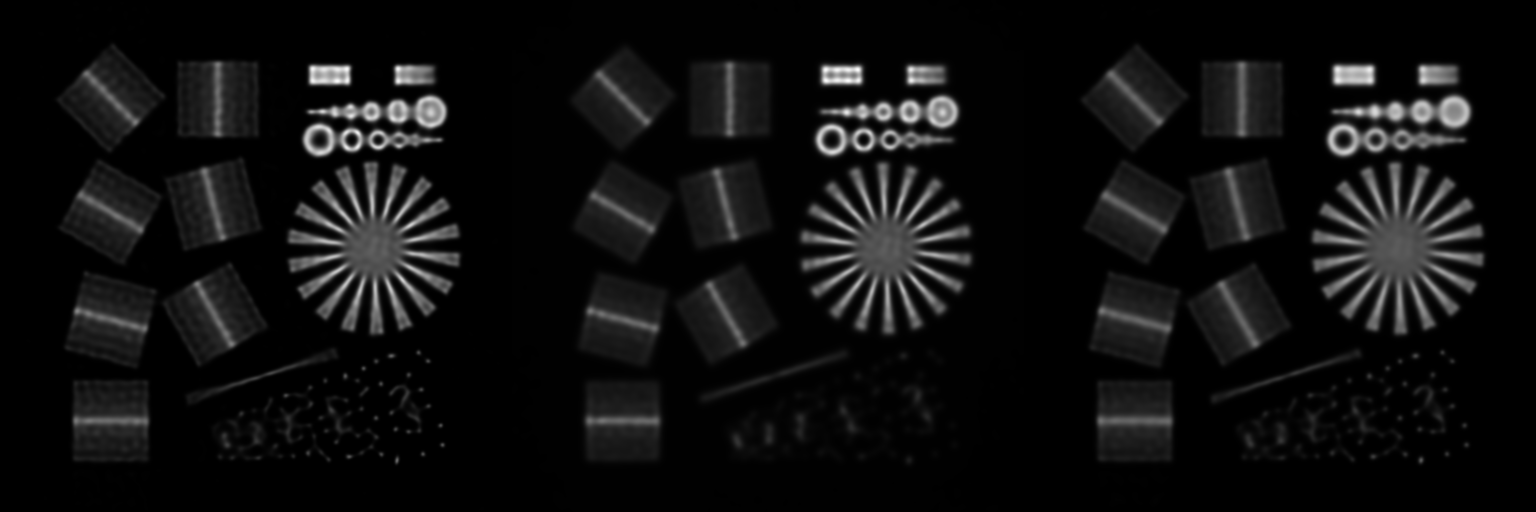Changing Loss Function: 2D Example
We can also change the loss function. However, the loss is the most important part guaranteeing good results. Therefore choosing different loss functions than the provided ones, will most likely lead to worse results. We now compare all implemented loss functions of DeconvOptim.jl. However, we could also include loss functions of Flux.jl since they have the same interface as our loss functions.
Poisson() will most likely produce the best results in presence of Poisson Noise. For Gaussian Noise, Gauss() is a suitable option. ScaledGaussian() is an mathematical approximation of Poisson(). At the moment ScaledGaussian() is not recommended because of artifacts in certain images.
Code Example
This example is also hosted in a notebook on GitHub.
using Revise, DeconvOptim, TestImages, Images, FFTW, Noise, ImageView
# custom image views
imshow_m(args...) = imshow(cat(args..., dims=3))
h_view(args...) = begin
img = cat(args..., dims=2)
img ./= maximum(img)
colorview(Gray, img)
end
# load test images
img = convert(Array{Float32}, channelview(testimage("resolution_test_512")))
psf = generate_psf(size(img), 30)
# create a blurred, noisy version of that image
img_b = conv(img, psf, [1, 2])
img_n = poisson(img_b, 300);
@time resP, optim_res = deconvolution(img_n, psf, loss=Poisson(), iterations=10)
@show optim_res
@time resG, optim_res = deconvolution(img_n, psf, loss=Gauss(), iterations=10)
@show optim_res
@time resSG, optim_res = deconvolution(img_n, psf, loss=ScaledGauss(), iterations=10)
@show optim_res
h_view(resP, resG, resSG)The left image is Poisson(), in the middle Gauss(). The right image is ScaledGauss(). 